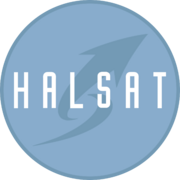HALSAT: Difference between revisions
No edit summary |
No edit summary |
||
| Line 23: | Line 23: | ||
The '''Hallanic Special Aeronautics and Technology Organisation''' ({{wp|Swedish language|Svaldish}}: ''Hallanisk Särskild Aeronautik och Teknik Organisation'', {{wp|Danish language|Tuskish}}: ''Hallæisk Særlig Aeronautik og Teknologiorganisation''), more commonly known by the acronym '''HALSAT''', is a transnational {{wp|space agency}} and {{wp|intergovernmental organization}} comprising the three [[Hallania|Hallanic]] states, committed to {{wp|space exploration}}. | The '''Hallanic Special Aeronautics and Technology Organisation''' ({{wp|Swedish language|Svaldish}}: ''Hallanisk Särskild Aeronautik och Teknik Organisation'', {{wp|Danish language|Tuskish}}: ''Hallæisk Særlig Aeronautik og Teknologiorganisation''), more commonly known by the acronym '''HALSAT''', is a transnational {{wp|space agency}} and {{wp|intergovernmental organization}} comprising the three [[Hallania|Hallanic]] states, committed to {{wp|space exploration}}. | ||
Founded in 1967 as a merger of the Svaldish and Tuskish space programs, HALSAT was founded with the dual aims of consolidating the smaller national programs and fostering pan-Hallanic friendship. Crethia would commit in 1969, and HALSAT would emerge as a tertiary competitor in the [[Timeline of Gaian | Founded in 1967 as a merger of the Svaldish and Tuskish space programs, HALSAT was founded with the dual aims of consolidating the smaller national programs and fostering pan-Hallanic friendship. Crethia would commit in 1969, and HALSAT would emerge as a tertiary competitor in the [[Timeline of Gaian space exploration|Gaian space race]], and was one of the primary signatories to the Pekrasta Extraterrestrial Arms Treaty. HALSAT is primarily responsible for civilian space exploration and technological development, in addition to the launch of satellites and humans into orbit. It has also conducted more advanced missions, such as moon landings, and is currently preparing for a mission to Mars. | ||
HALSAT is headquartered at 101 Sönnungr Crescent, in the Svaldish capital of [[Vitstad]], while the organisation's primary launch facility is the Kyuko Space Centre Complex in the Tuskish overseas territory of [[Kyuko]]. The organisation is largely administered by the Director-General, which is currently Maren Rasmussen, a former Tuskish astronaut. | HALSAT is headquartered at 101 Sönnungr Crescent, in the Svaldish capital of [[Vitstad]], while the organisation's primary launch facility is the Kyuko Space Centre Complex in the Tuskish overseas territory of [[Kyuko]]. The organisation is largely administered by the Director-General, which is currently Maren Rasmussen, a former Tuskish astronaut. | ||
Revision as of 12:23, 16 September 2019
Hallanisk Särskild Aeronautik och Teknik Organisation
Hallæisk Særlig Aeronautik og Teknologiorganisation | |
 Forward Together | |
| Abbreviation | HALSAT |
|---|---|
| Formation | 3 March 1967 |
| Headquarters | 101 Sönnungr Crescent, Vitstad, Svaldheim |
Official language | Crethian, Svaldish, Tuskish |
Administrator | Maren Rasmussen |
| Kyuko Space Centre Complex, Kyuko, Tuskval | |
Parent organisation | |
Budget | |
| Website | www.halsat.org |
The Hallanic Special Aeronautics and Technology Organisation (Svaldish: Hallanisk Särskild Aeronautik och Teknik Organisation, Tuskish: Hallæisk Særlig Aeronautik og Teknologiorganisation), more commonly known by the acronym HALSAT, is a transnational space agency and intergovernmental organization comprising the three Hallanic states, committed to space exploration.
Founded in 1967 as a merger of the Svaldish and Tuskish space programs, HALSAT was founded with the dual aims of consolidating the smaller national programs and fostering pan-Hallanic friendship. Crethia would commit in 1969, and HALSAT would emerge as a tertiary competitor in the Gaian space race, and was one of the primary signatories to the Pekrasta Extraterrestrial Arms Treaty. HALSAT is primarily responsible for civilian space exploration and technological development, in addition to the launch of satellites and humans into orbit. It has also conducted more advanced missions, such as moon landings, and is currently preparing for a mission to Mars.
HALSAT is headquartered at 101 Sönnungr Crescent, in the Svaldish capital of Vitstad, while the organisation's primary launch facility is the Kyuko Space Centre Complex in the Tuskish overseas territory of Kyuko. The organisation is largely administered by the Director-General, which is currently Maren Rasmussen, a former Tuskish astronaut.